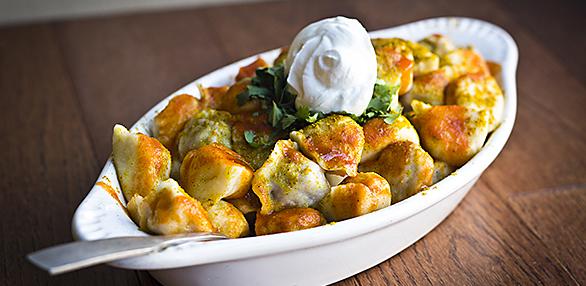As the weather in Madison starts to get colder and the days begin to grow shorter, local food delivery services in the Madison area are preparing for what could be one of their busiest delivery seasons yet.
“Colder temperatures, rainy days and swings in weather typically mean higher delivery numbers,” EatStreet Content Marketing Manager Caitlyn Kalscheur said about fluctuations in food delivery orders as the weather changes. “Overall in the winter, we tend to see increased numbers in food delivery. Usually, orders drop a bit when students leave and when people are celebrating the holidays.”
Periods of cold weather always prove an excellent way to boost delivery orders, but food delivery in Madison could get even busier as 2020 comes to a close. Orders for local delivery services are higher this year more than ever due to the effects of COVID-19 on normal in-person restaurant patrons.
While Madison residents would normally be going out to eat, most are now staying inside to quarantine, providing a huge increase in sales for delivery services across the area. With the addition of streateries closing for the season, there is little choice left to get some of our favorite restaurant foods outside of calling for delivery.
The food delivery industry has been on a steady rise throughout the U.S. for the last few years. As The Northwestern Business Review notes, food delivery is one of the fastest growing industries in the nation, boasting a 20% increase in delivery sales in 2018, along with a constant 10% growth in the last five years.
“[Food] delivery has become a need-to-have and no longer a nice-to-have in the restaurant industry,” Senior Vice President of industry relations for the NPD group Warren Solochek said about the industry in a 2018 article. “Restaurants need delivery in today’s environment in order to gain and maintain share. It has become a consumer expectation.”
While already an expanding industry, the onset of COVID-19 has boosted food delivery orders further through the roof throughout the March and April quarantine, and with the approach of another bitter Wisconsin winter, food delivery sales in the Madison area are expected to skyrocket even further.
“During the initial stages of quarantine back in March, and during the current school year, we’ve seen an increase in the number of customers using our delivery and takeout service in our hometown of Madison. For the campus area specifically, we’ve seen around a 40% lift in orders since this time in 2019,” Kalscheur said on EatStreet’s huge sale boost in 2020.
All signs point to a chart-breaking delivery season for EatStreet as the University of Wisconsin begins to impose quarantine restrictions of student residence halls and limits to in-person interactions between students.
Throughout the Witte and Sellery quarantine, EatStreet broke their single year delivery records due to the added influx of orders from students in both dorms.
As customer orders continue to grow in the food delivery industry, so too has the competition, as smaller and newer services are beginning to compete with the giants like UberEats, DoorDash and others for a piece of the food delivery pie.
Chowbus, a relatively new service in the delivery game which was founded in 2015, looks to specialize its delivery to specifically Asian food delivery. Chowbus now delivers for various State Street restaurants within the UW campus area giving students yet another option when trying to answer the age-old question, “what should I have for dinner tonight?”
Growth in food delivery services is especially prominent in large college campus areas like UW as students are now given an alternative to the sometimes unappealing dining hall options.
Badgers are no doubt familiar with the rise in the popularity of delivery services, as our campus is now crawling with the little white Starship delivery robots, a competitor of third party delivery services meant to keep student dining dollars on campus.
While the industry is competitive, Kalscheur explains that at the end of the day, it’s all about helping restaurants stay afloat in the uncertain economy brought on by coronavirus.
“This year, with restaurants not being able to have as many people dine in, we could see delivery and takeout volume continue to trend upward,” Kalscheur said. “Our goal is to help restaurants keep their doors open and boost their delivery business, so we can help support them during this incredibly difficult time.”


